With his years of experience, Rotten Tomatoes-certified film critic and Film Critics Guild member Akhil Arora assesses and ranks all 11 Star Wars movies.

For newcomers, Star Wars can be a daunting franchise. The mainline movies—what’s known as the Skywalker Saga—are numbered Episodes I through IX in Roman numeral style. But the first film to be released was Episode IV. That’s because creator George Lucas was already thinking of prequels before he finished a single Star Wars movie. As such, they weren’t released in “order”. Following Episodes IV, V, and VI between 1977 and 1983—this is known as the original trilogy—Lucas began work on the prequel trilogy that fleshed out the life of the chief villain, Darth Vader. That became Episodes I, II, and III, which came into theatres between 1999 and 2005.
Lucas had originally maintained that no one else would make Star Wars movies. But then, in 2012, he sold all of it to Disney for four billion dollars. Since then, we’ve had five more. (Additional ones are in the works.) Episodes VII, VIII, and IX pick up three decades from the events of Episode VI. They make up what is known as the sequel trilogy and complete the Skywalker Saga. Alongside, we’ve had two anthology tales—both set prior to the events of Episode IV. It’s these 11 movies that I’m ranking here.
I’m only considering live-action movies so there’s no room for The Clone Wars here. And I’m not getting into any of the made-for-TV specials. Let’s be honest fans, when you ask someone to watch a Star Wars movie, you’re not thinking of those films anyway.
I rewatched every Star Wars movie—for research purposes, of course—before sitting down to write this. What stood out is how the original trilogy just had one lightsaber fight per movie. The original trilogy is also very, very goofy. The prequel trilogy swerves between kiddish and extremely self-serious. And the newest films have given into Marvel’s biggest problem—Star Wars has become the franchise where people refuse to stay dead. (They have been chopped in two, thrown down a shaft, or fallen into the mouth of a beast. Two of those resurrections happened in spin-off TV shows.)
Thankfully, there’s a lot more to it than retcons. With that, it’s time for my ranking of every Star Wars movie.
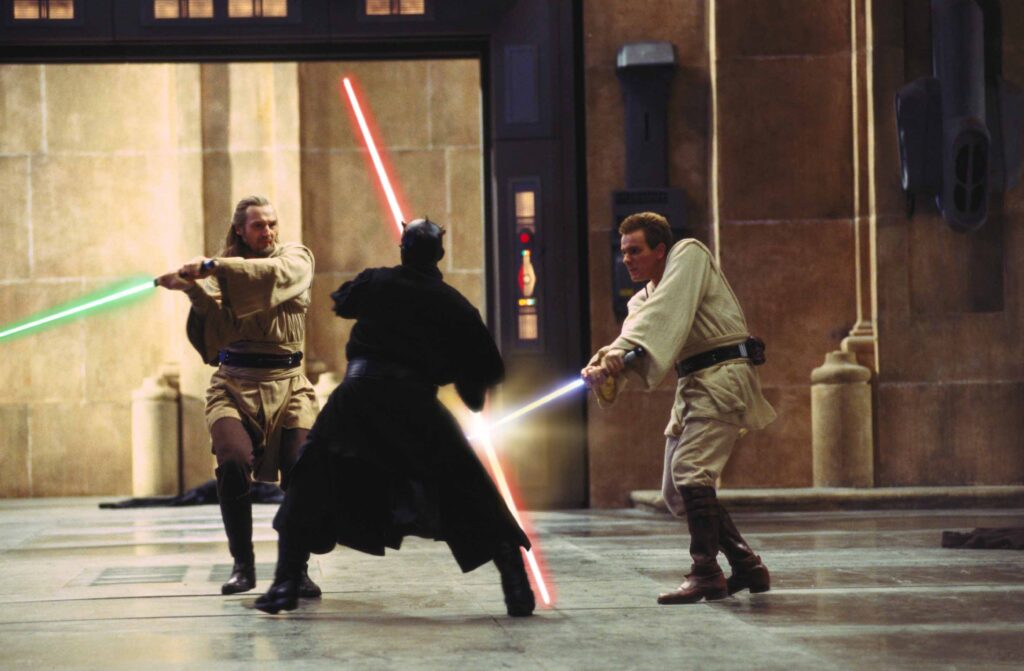
Episode I – The Phantom Menace
The first chapter of the prequel trilogy has such a tiny imagination that it rests on a boy no one knows and a race he’s never even finished. Meanwhile, the Queen (Natalie Portman) simply stands by as a Jedi Master (Liam Neeson)—the knight assigned to her protection—claims nothing can be done. It’s the most inorganic way to force-feed Anakin Skywalker into the plot. On top of that, we have the annoying nightmare that is Jar Jar Binks, who speaks in pidgin English which is no doubt a racist caricature. Ew.
The Phantom Menace fails on virtually every front. It features curiosities like Anakin’s implied virgin birth, Neeson running around calling him “the chosen one”, and spouting nonsense about midi-chlorians (unnecessary exposition about the Force). Padme and Anakin’s dynamic is barren—it’s weird to think this is the intended setup for a future romance—and it doesn’t help that Jake Lloyd isn’t as great as Ani. He’s a big part of the movie, after all. He struggles to convey emotion and feels mundane even when he’s excited.
The CGI is completely unbelievable, there are too many “yippee”s in the film, and the action isn’t thrilling and fails to impress technically. It’s closer to a cartoon than a movie.
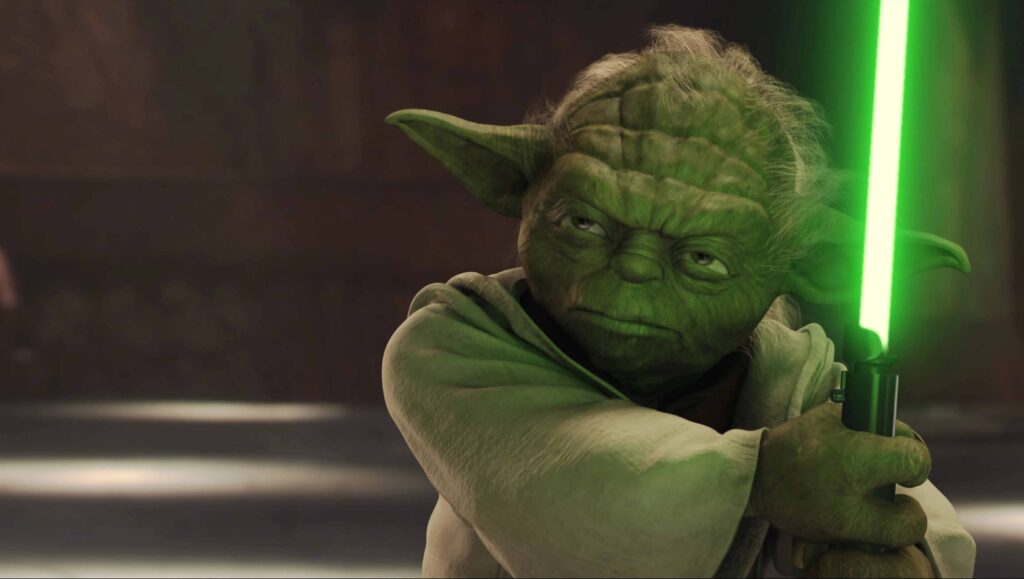
Episode II – Attack of the Clones
Missing thrust and purpose, the middle chapter of the prequel trilogy devotes half its runtime to a mediocre love story. (Hayden Christensen’s acting is a drag on the film.) This is epitomised in a scene where Padme shares something about her childhood only for Anakin (Christensen) to respond that he doesn’t like sand. Who is coming up with these dialogues?
Attack of the Clones also tries its hardest to establish that this is a very different grown-up Anakin to convince the audience to buy the romance, given one of them was a literal child in the last chapter.
It’s also too wayward and listless—there’s little plot and the film waits to find plot elements. Despite a split narrative and promising political parallels (to the days of Caesar), it simply doesn’t have enough to grab your interest. It’s a yawnfest for much of the running. A round of intense combat and lightsaber fights in the finale aren’t enough to redeem this clunker.
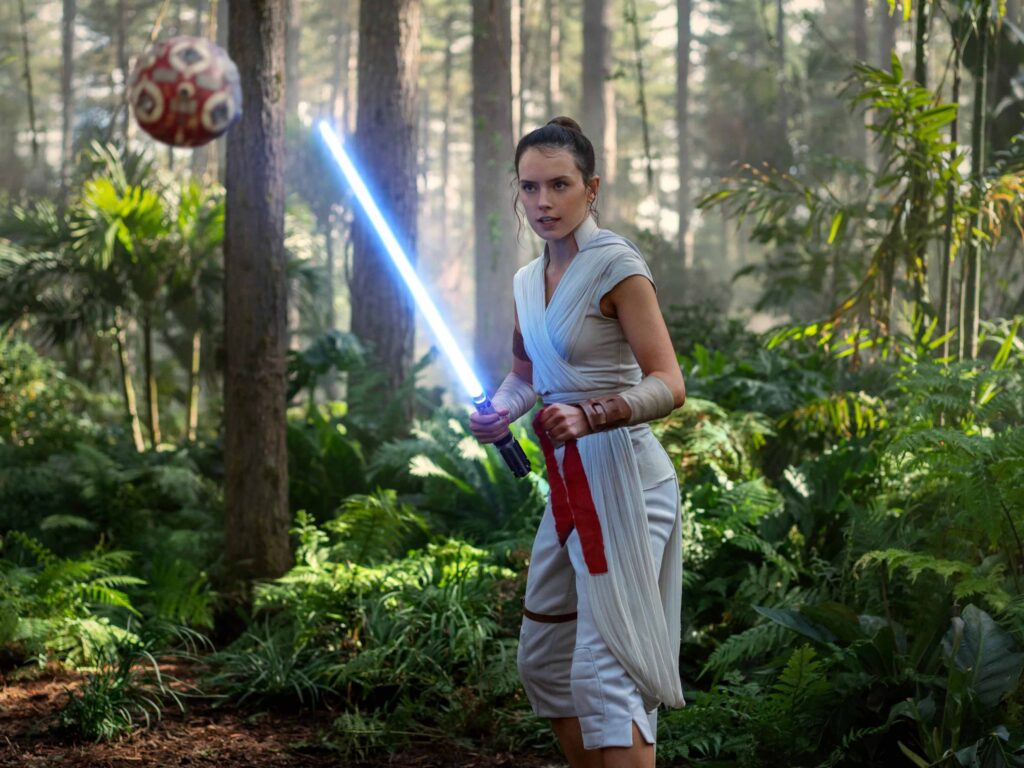
Episode IX – The Rise of Skywalker
An overcrowded movie—it’s too scattered, throws a hundred ideas into the blender, but there isn’t a single driving thought through it—that proceeds at a breakneck pace to hide its flaws and poor writing choices. Completely beholden to the past, the final chapter of the Skywalker Saga refuses to pay heed to the lessons before it and actively betrays what its predecessor (and the franchise itself) stood for. So much for letting go of the past—The Rise of Skywalker fully embraces it.
When it’s not ignoring its principal characters, it’s introducing ideas that have nothing to do with what we have known about them. It reeks of desperation—why does Rey (Daisy Ridley) need to be somebody’s granddaughter to flirt with the dark side? More crucially, it’s unearned in its own right. It’s also another sign of the lack of inventiveness (case in point: a thousand mini-Death Stars sprouting out of nowhere and collapsing into nothingness).
Featuring a few funny choices, and hints of genuine moments between Rey and Kylo Ren (Adam Driver), but also some of the least self-aware dialogues, this trilogy conclusion is ultimately an assault on the senses.
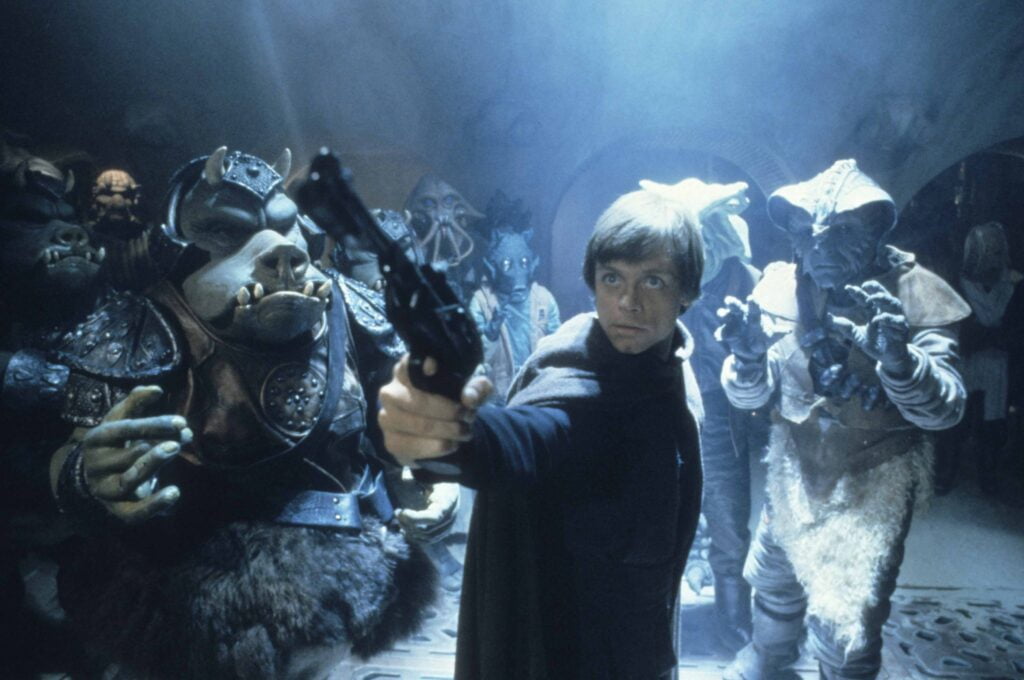
Episode VI – Return of the Jedi
The first act is all Jabba the Hutt nonsense—it proceeds at a laboured pace and stands out as a comical low-key start to the finale of the original trilogy. The second act introduces Ewoks, the teddy bear-like native dwellers of a forest moon, which pushes Star Wars into goofy kiddie comedy. Heck, even the way Boba Fett “dies” before that is part of that. And sandwiched between are curious choices like the gold metal bikini that slave Leia (Carrie Fisher) is made to wear or the return of Death Star that signals how quickly Lucas ran out of ideas.
It takes 80 minutes for Return of the Jedi to kick in when Luke Skywalker (Mark Hamill) and Darth Vader meet again. The throne room scene on Death Star II—between Luke, Vader and the Emperor (Ian McDiarmid)—is the highlight of the film, as the cunning and manipulative ruler uses the suffering of Luke’s friends to try to get him to turn to the dark side.

Solo: A Star Wars Story
Donald Glover (a younger, charismatic Lando Calrissian) and Phoebe Waller-Bridge (the outspoken droid L3-37) are the best parts of this standalone chapter that takes place a decade prior to the events of Episode IV – A New Hope. Some nice humour elsewhere and a few unexpected twists too—though it does feel a bit like a Wikipedia article at times. After all, it’s shackled by what we already know of Han—from meeting Chewbacca and Lando to winning the Millennium Falcon in a bet and making the Kessel Run. There’s not a lot of room to create a meaningful story.
Solo does try to show us the person and not just what he did. Han is always on the run to be reunited with the woman he lost but he fails or refuses to see that she isn’t who he wants her to be. It’s an ‘innocence lost’ movie. It helps too that the actors are all really good. But it’s a distracted and uneven affair with one eye on potential sequels that never materialised. Solo is half the reason Disney stopped making more Star Wars anthology films. (The rise of Disney+ is the other half.)

Episode III – Revenge of the Sith
Petulant and on a power trip, Anakin’s turn to the dark side is the core of the final chapter in the prequel trilogy. It’s evident that he isn’t ready to be a Jedi Master or serve on the council—being powerful doesn’t make you wise and being influential is not a stamp of approval—and his displeasure at not getting what he wants further pushes him into Supreme Chancellor Palpatine’s arms. But that transformation isn’t fully earned and feels half-baked. He’s sold too easily on killing the Jedi, for one.
The nightmare of losing Padme during childbirth clouds Anakin, more so because of what he went through with his mother. But because that wasn’t well depicted in Episode II – Attack of the Clones, it’s hard to buy into the fearful and unloving man he’s turned into. Stripped of her agency and a significant role, Padme is relegated to a corner with her pregnancy. She goes from being a politician with her own views to merely being afraid for Anakin.
What saves Revenge of the Sith is that it ends well. The final 45 minutes improve upon everything before it. After Padme confronts Anakin—a tragic, violent and devastating end that magnifies the cracks in their dysfunctional marriage—we are treated to a lengthy lightsaber duel between Anakin and Obi-Wan Kenobi (Ewan McGregor). That’s followed by the film’s most tender scenes as Padme and Anakin die. One loses the will to live and the other is reborn as something else entirely.
Hellbent on taking itself way too seriously, it’s less than the sum of its parts.

Episode IV – A New Hope
Goofy and lightweight, the first ever Star Wars movie moves very slowly, and everything takes forever. Even more so by the standards of action blockbusters. We’ve got two bumbling fools carrying these highly classified schematics being tossed around. Everything else is a little humdrum and not particularly thrilling. Still, there’s a charm to the simplicity, be it the cantina, the low-IQ Stormtroopers, or the film’s structure itself.
Break it down and you find A New Hope is just Tatooine, Death Star, and the Battle of Yavin (which is also Death Star). Even the finale feels threadbare. As the rebels (just three squadrons) take on the planet-killing weapon, the only ones opposing them are Vader and two support ships. Victory is followed by a cheesy medal ceremony.
In between all that you meet the central trio. Han Solo (Harrison Ford) only thinks about himself. Leia is more than a pretty princess—she’s the one who is active in the rebellion. Luke is merely caught up in all of it; he wants to be like his Jedi father whom he knows little about. Questions like how he got to be such a good pilot and where he learnt to shoot a blaster don’t matter. This is Star Wars!
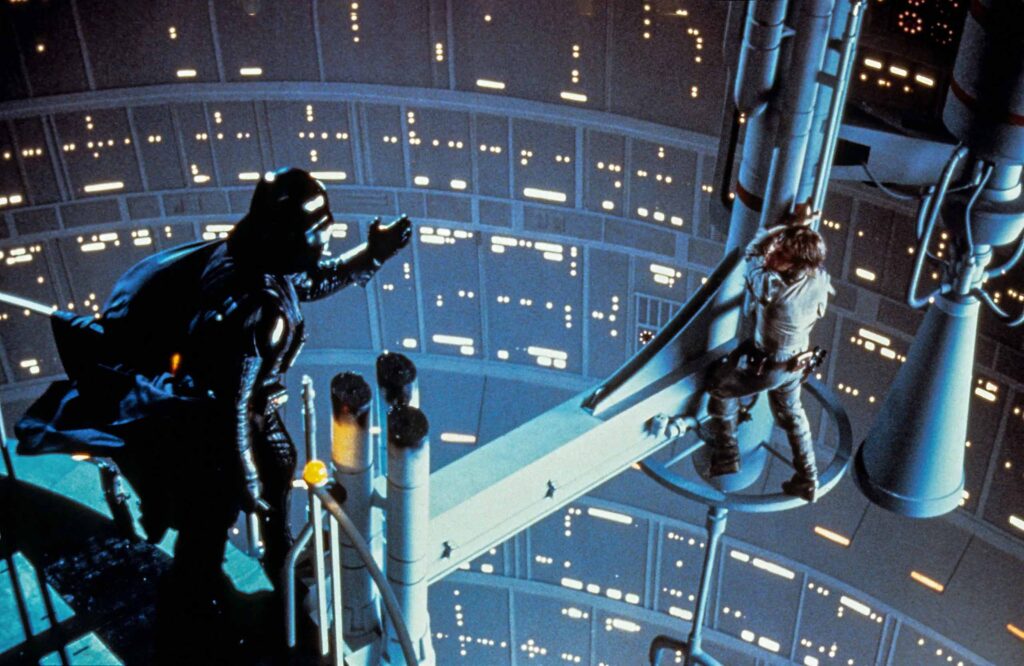
Episode V – The Empire Strikes Back
The second half is where the middle chapter of the original trilogy gets good. Yoda’s training of Luke has some classic moments—including the psychological horror of Luke’s confrontation. And as the young Skywalker abandons his Jedi training because of a vision he saw, things really start to get interesting. The highlights are the big reveal and the silhouetted lightsaber duel.
Amidst it, we have a coming-of-age tale. Luke is adamant about saving his friends Han and Leia but realises he has a lot more to learn (just as Yoda and Obi-Wan Kenobi told him).
The Empire Strikes Back isn’t all grown-up, though. Yoda’s original variant is such a critter—he exists as comedic relief and feels like he’s been taken off Sesame Street. (That said, there is a serious mentor moment later.) And the film’s opening half-hour is downright cringe. Han spends all of it trying to get Leia to admit she likes him. Instead, in front of Han, she kisses Luke who does a casual cool boy move. This was still when Lucas hadn’t decided Luke and Leia were going to be siblings. Awkward.
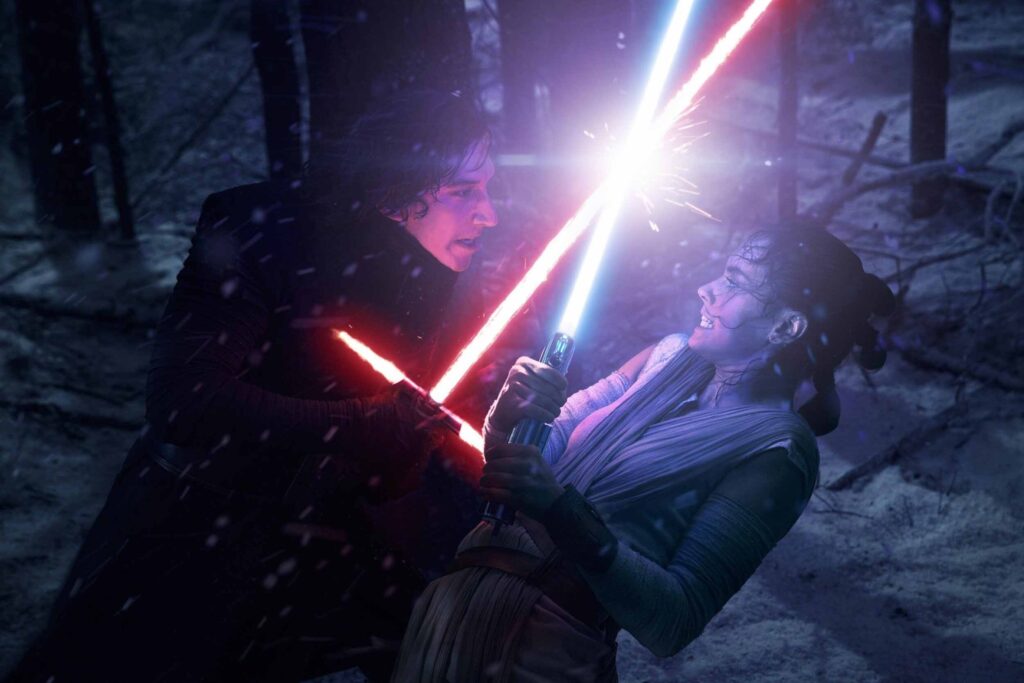
Episode VII – The Force Awakens
The first chapter of the sequel trilogy might be derivative but it’s an enjoyable romp and better handled than what it copies. Some of that is thanks to its terrific pacing but director J.J. Abrams also knows when to slow down. The conversations have nuance and feel, especially the reunion of Han and Leia, and Kylo Ren’s interrogation of Rey. (The latter scene benefits from the vulnerability of the villain as it’s the first time Ren takes off his mask.)
It helps that the new actors—Daisy Ridley, Adam Driver, John Boyega, and Oscar Isaac—are all good in their roles, too. The characters have heft: both Rey and Finn (Boyega) are scared and running from their destinies. One is living in denial and the other wants to escape his childhood trauma. Ren’s conflicted nature is apparent; he’s caught between the menace he desires to be and the lack of self-control he possesses.
The Force Awakens is also very funny. Abrams balances the humour and sincerity well, showcasing that he can honour the legacy of Star Wars while also poking fun at the machismo of action movies. Most importantly, it passes the baton to a new generation quite seamlessly, with its new cast of characters largely expanding rather than contracting.
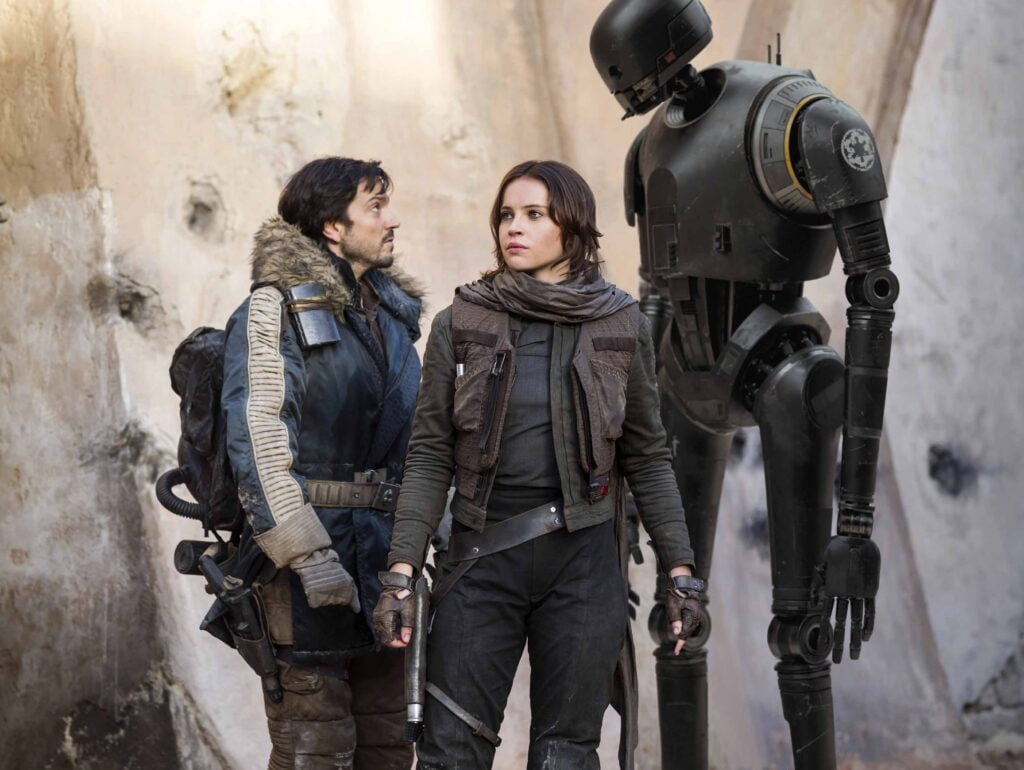
Rogue One: A Star Wars Story
With terrific well-detailed characters and intense, thrilling action, this is a self-serious film that earns its stripes. Say hello to a grown-up Star Wars movie. Someone must do the dirty work in a war while the heroes do the, well, heroic stuff. It’s men like Cassian Andor (Diego Luna) who must betray their own and put others in the ground to ensure the Rebellion has a chance, a future. It’s grim but this is reality.
Jyn Erso’s pain and suffering are relatable. You can see why someone in her place would’ve no interest in the “cause”. Her journey—from wanting nothing to do with the rebellion and being converted to the cause—is sublime. The scene in which Jyn’s optimism reaches a crescendo is supremely constructed. I had tears in the callback moment when she uttered, “Rebellions are built on hope.”
It’s not all serious. Rogue One finds moments of light amidst the darkness—chiefly through the reprogrammed Imperial enforcer droid K-2SO (Alan Tudyk).
The final battle on Scarif is just all-out glorious. Something is going on in the air, a lot of action is on the ground, and there are even some fights in space. Yet, everything is easy to follow. It’s expansive, well-detailed, and feels like it involves a thousand people, all of whom have something to do of import. But it’s not the immersive nature of the grand battle that makes it thrilling—rather the central mission of grabbing the Death Star plans gives it a defined focus.

Episode VIII – The Last Jedi
Willing to question and deconstruct established institutions, the middle chapter of the sequel trilogy pushes the franchise towards evolution.
It rightly investigates the romanticised legacy of the Jedi Order, with Luke Skywalker questioning their usefulness and, in turn, his own. He needs to accept that failure can be a teaching moment and that his pupils will grow beyond him—that’s the burden of a master. It’s why the Yoda scene is so crucial. We must let go of the old to progress. The film speaks to the audience and humanity in general.
With Poe Dameron, the movie questions trigger-happy flyboys. His actions do doom them—the Resistance loses its entire bomber fleet and their ship cloaking tech is revealed partly because of him. But The Last Jedi also signals growth. This is the movie where Poe learns the difference between being a hero and a leader. (The passing of the baton from Leia to Poe is so nicely done.)
It understands the foolhardy of bravery but at the same time, it knows how to deliver action. The opening sequence is a delight—it mixes sincerity, humour, and self-awareness, which is true of the film in its entirety—and the force projection stuff is a mighty pull. It cleverly satisfies the dream of every Star Wars fanboy but in refusing to fight Kylo Ren, Luke passes on a valuable lesson.
The Last Jedi knows how to quieten down and be tender. It’s got character nuance in spades that allows it to carefully flesh out their inner turmoil. And it’s got thematic depth—commenting on topics such as classism and the military-industrial complex. Be it Republic, Empire or First Order, the same people benefit from war.
It’s the most complete Star Wars movie ever made.
- Death Stranding 2 review: drifting into doubt – December 23, 2025
- Every Indian Netflix original movie, ranked – December 19, 2025
- All 37 Marvel Cinematic Universe movies ranked, including The Fantastic Four: First Steps – August 3, 2025


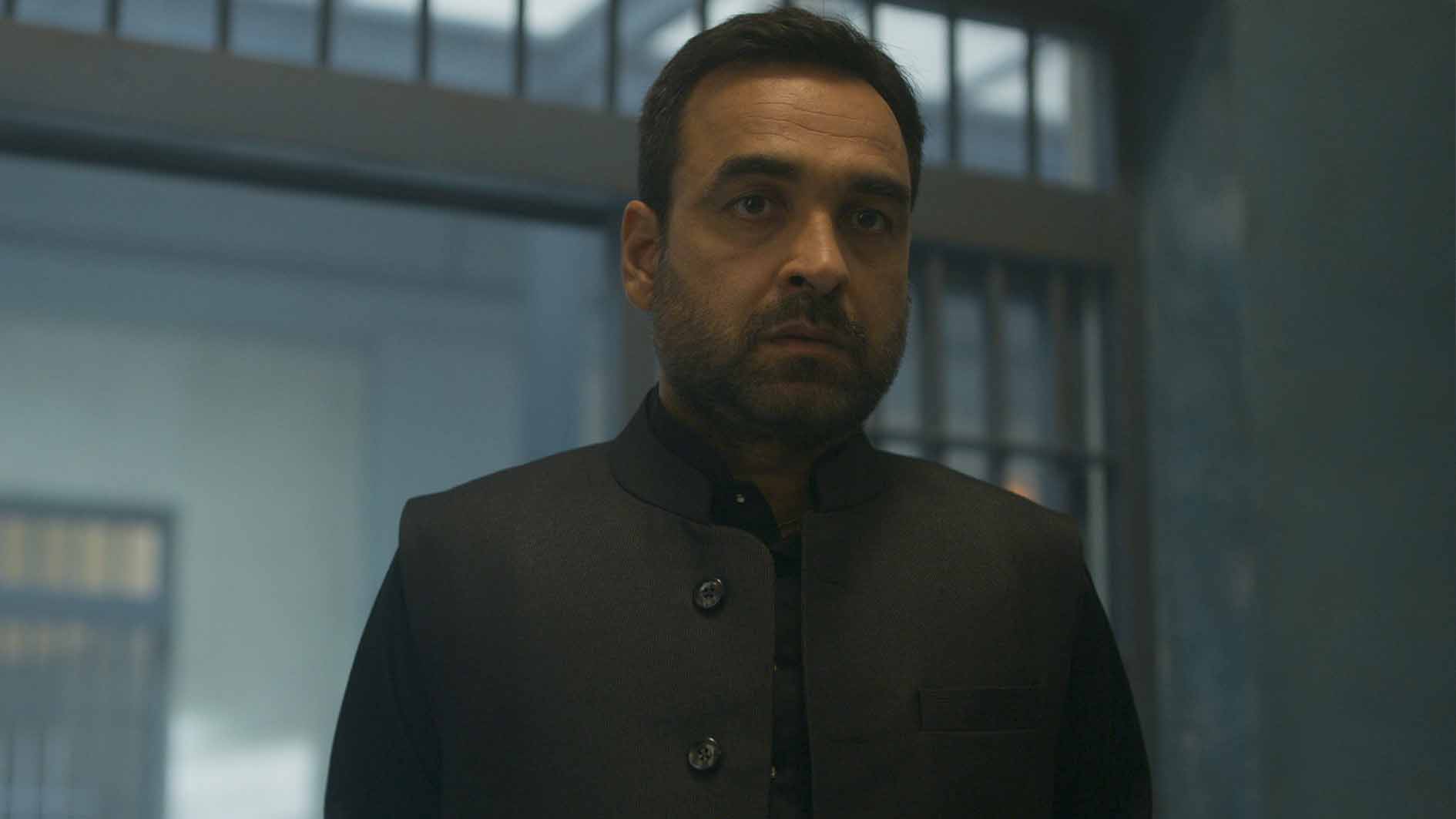
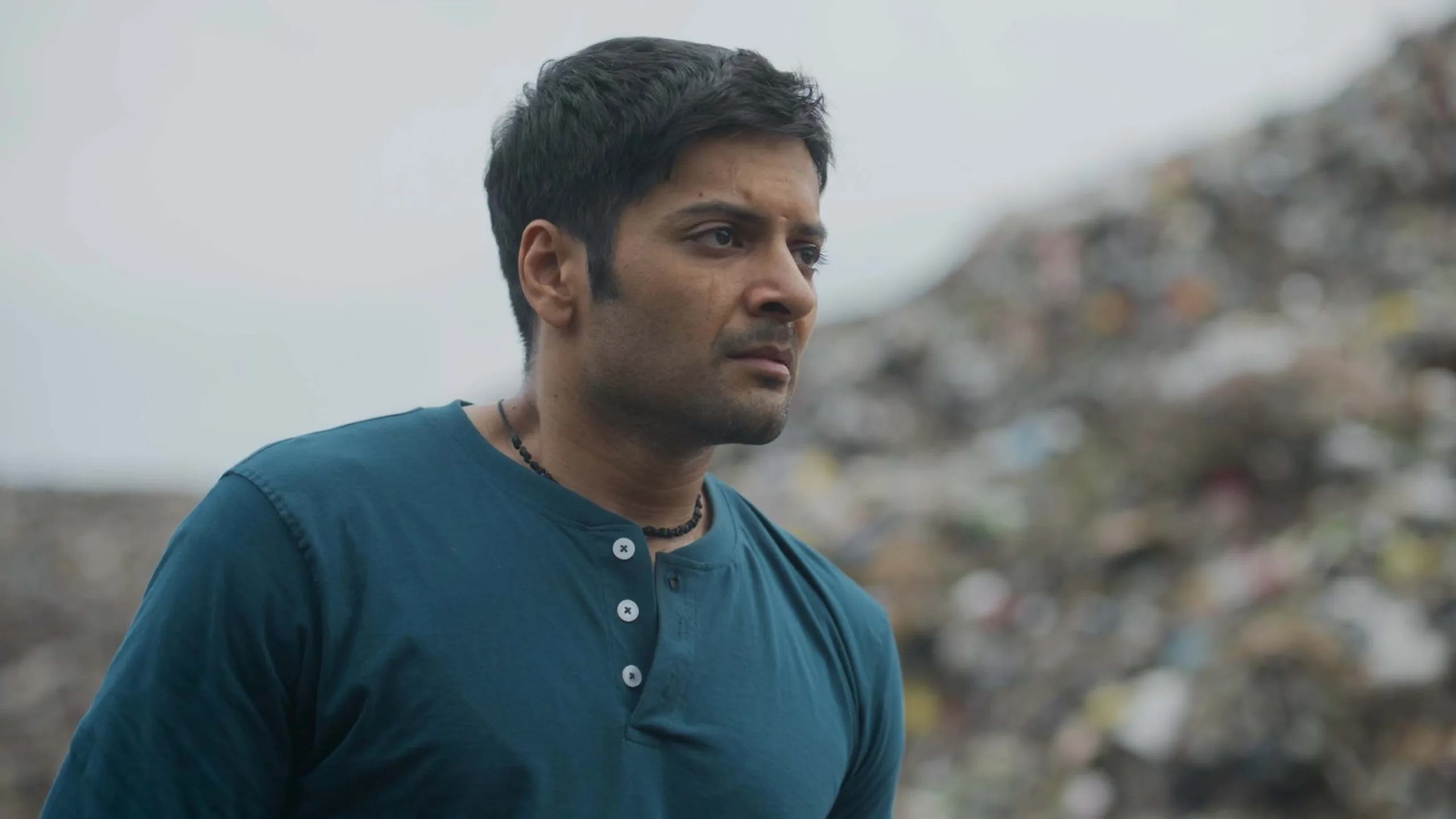
What do you think?